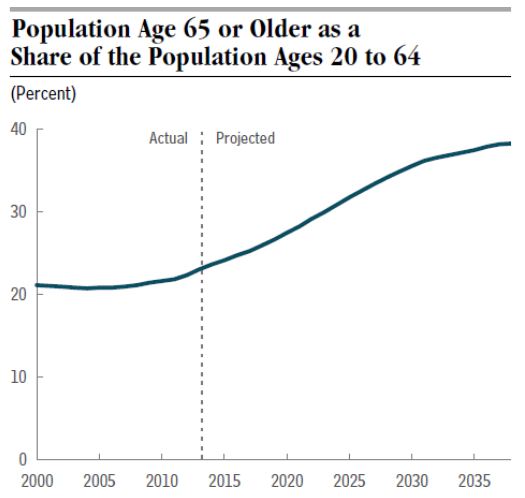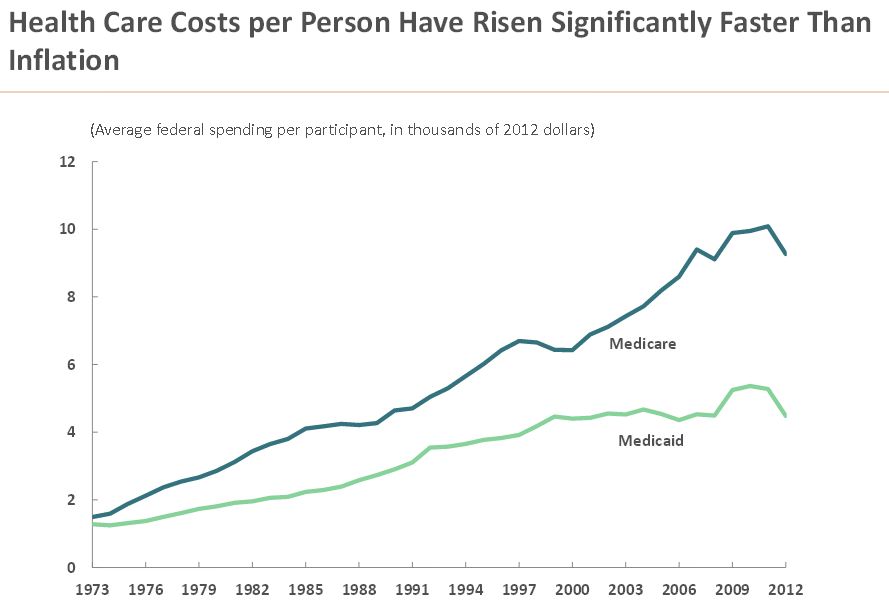CBO Director Examines Drivers of Health Care Spending Growth
As the conferees met yesterday, any doubt that we can afford to wait on the long-term debt problem should have quickly been erased after CBO Director Doug Elmendorf's testimony to the conference committee. While the budget outlook has improved somewhat in the short term, little progress has been made on the long-term problem. And fixing the long term will likely require greater reforms to entitlement programs and the tax code.
In another presentation yesterday, Elmendorf explained that if we want to make real progress on our fiscal problem, we will have to address health care. Elmendorf's presentation to the Public Policy Institute at the Wharton School at the University of Pennsylvania shows that health care by far has outpaced the growth of other programs, and the projections look even starker over the long term.
He attributes the growth of health care spending to three factors: population aging, the expansion of health insurance coverage in the Affordable Care Act, and health care cost growth.
A lot of the growth in health care spending can be tied to the retirement of the Baby Boom generation and population aging. But as Elmendorf notes, it is difficult to do much on population aging because most policies to improve the health care system should also increase longevity. That is especially the case now that CBO has revised down its estimate for increasing the Medicare retirement age. This is not to say that there aren't many other ways to address population aging - Social Security reform is a great way to tackle that driver of the debt.

Alternatively, many health policy experts have stressed delivery and payment reforms, which could reduce health care cost inflation while ideally not affecting or improving quality of care. Over the past few decades, health care costs have growth much faster than inflation, and if history is any indication, this trend is likely to continue unless significant changes are made. There has been some slowdown in health care cost growth over the past few years, but it is still too early to conclude how much of the slowdown is permanent and how much is due to temporary factors like the poor economy.

Delivery and payment reforms are particularly promising, but lawmakers must also use caution in the same way that they do with eligibility reforms. As Elmendorf notes:
Restructuring federal payments for health care holds the promise of encouraging greater efficiency in the delivery of care or better choices about the use of care—but it also would present risks of the same shifting of costs and loss of access to insurance and care.
That being said, lawmakers have many different options available to them that could substantially improve the health care system. Reforming federal health spending to make it sustainable will be an ongoing process, but lawmakers should begin as soon as possible. The longer we wait, the less time we will have to phase in changes slowly and the larger the debt problem will grow to be.
Click here to see Elmendorf's full presentation.


